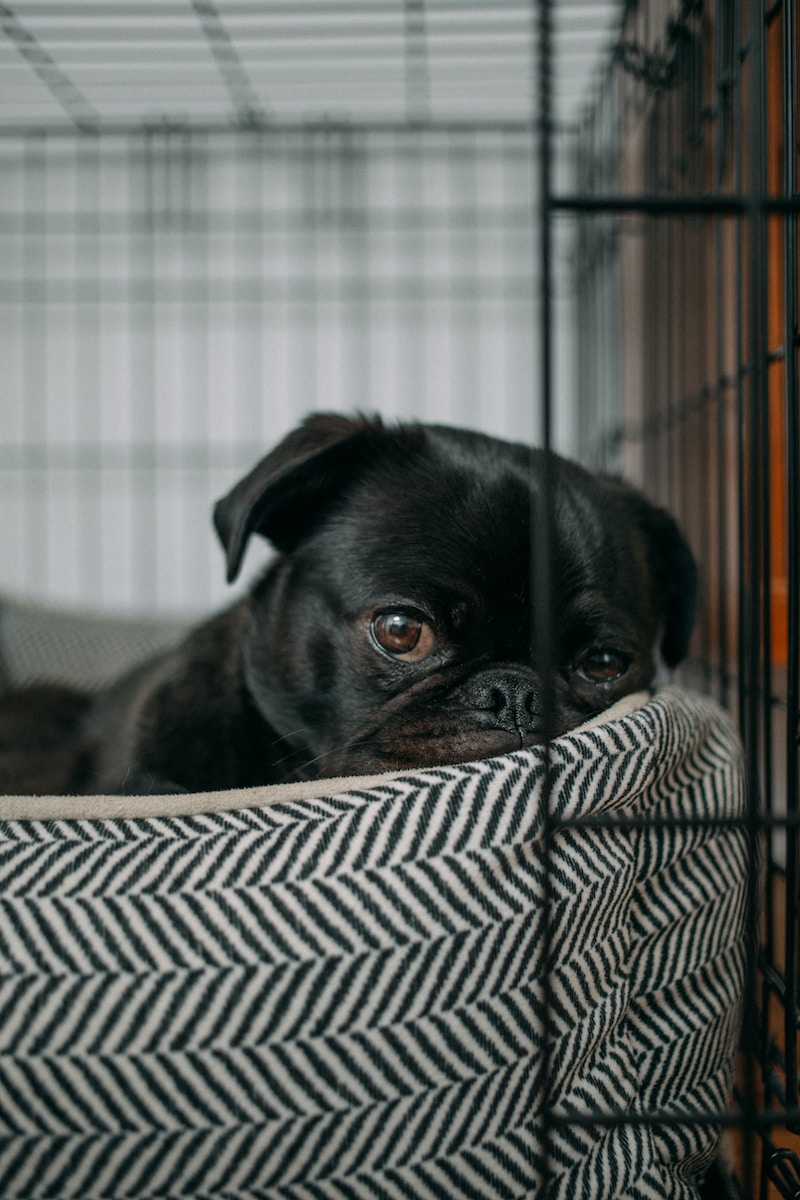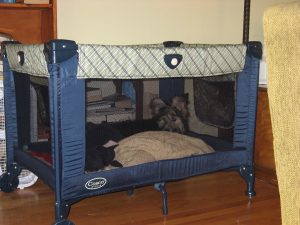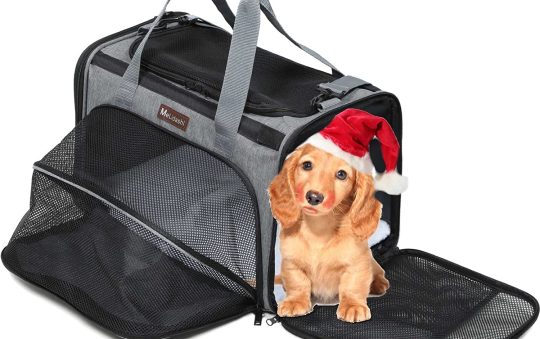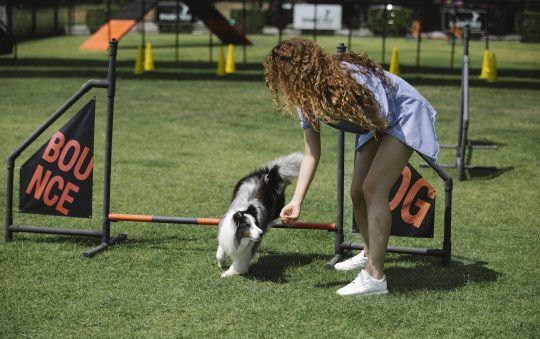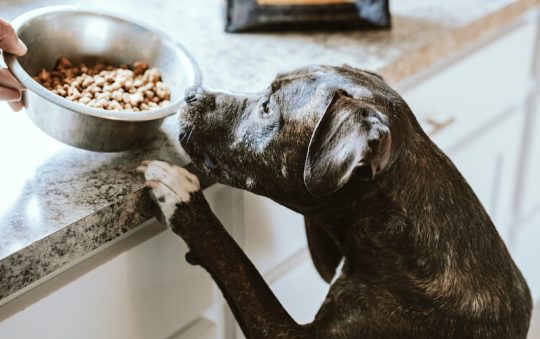As a dog owner, one of the most important decisions you’ll make is choosing the right crate, kennel, or playpen for your furry friend. These tools can be invaluable for keeping your dog safe, comfortable, and well-behaved, whether you’re at home or on the go. But with so many options available, it can be tough to know where to start.
That’s why I’ve put together this complete guide to dog crates, kennels, and playpens. In this article, I’ll walk you through everything you need to know to choose the best option for your dog, no matter their size, breed, or temperament. I’ll cover the different types of crates, kennels, and playpens available, as well as the pros and cons of each. I’ll also provide tips for crate training your dog, so you can ensure they feel comfortable and secure in their new space.
Why Use a Dog Crate, Kennel, or Playpen?
You want to provide your furry friend with a safe and comfortable space to call their own. A dog crate, kennel, or playpen can be an excellent choice for achieving this goal. In this section, we’ll explore the benefits of using a dog crate, the types of dog crates, kennels, and playpens available, and why they are useful for different purposes.
Benefits of Using a Dog Crate
A dog crate can serve many purposes, from providing a safe place for your puppy to sleep to helping with potty training. Here are some of the benefits of using a dog crate:
- Safe Space: A dog crate provides a safe and secure space for your dog to call their own. It’s a place where they can go to feel safe and comfortable, especially when they need some alone time.
- Potty Training: A dog crate can be a valuable tool for potty training your puppy. Dogs naturally avoid soiling their sleeping area, so a crate can help them learn to hold their bladder and bowels until they are taken outside.
- Chewers: If your dog is a chewer, a dog crate can be a lifesaver. It can keep them from destroying your furniture, shoes, and other valuables when you’re not around to supervise.
Types of Dog Crates, Kennels, and Playpens
There are many types of dog crates, kennels, and playpens available, each with its own unique features and benefits. Here are some of the most common types:
- Wire Crates: Wire crates are popular because they are lightweight, easy to clean, and provide good ventilation. They are also collapsible, making them easy to store and transport.
- Plastic Crates: Plastic crates are more durable than wire crates and provide better insulation. They are also more enclosed, which can make them feel more like a den to your dog.
- Soft-Sided Crates: Soft-sided crates are lightweight and easy to transport, making them a good choice for travel. They are also more comfortable than wire or plastic crates, as they provide a soft, cozy space for your dog to rest.
- Kennels: Kennels are outdoor structures that provide shelter for your dog. They are usually made of wood or metal and can be customized to fit your dog’s needs.
- Playpens: Playpens are a great way to give your dog some extra space to play and exercise. They are usually made of metal or plastic and can be configured in a variety of shapes and sizes.
In conclusion, a dog crate, kennel, or playpen can be a valuable tool for providing your dog with a safe and comfortable space to call their own. Whether you’re looking to potty train your puppy, keep your chewer out of trouble, or give your dog some extra space to play, there’s a type of crate, kennel, or playpen that will meet your needs.
Choosing the Right Dog Crate, Kennel, or Playpen
As a dog owner, it’s important to provide your furry friend with a safe and comfortable space to call their own. A dog crate, kennel, or playpen can be a great option for this. However, with so many options available, it can be overwhelming to choose the right one for your pup. In this section, I’ll break down the key factors to consider when choosing the right dog crate, kennel, or playpen for your dog.
Size and Measurement
One of the most important factors to consider when choosing a dog crate, kennel, or playpen is the size and measurement. It’s important to choose a crate that is the right size for your dog, as a crate that is too small can be uncomfortable and a crate that is too large can be unsafe. To determine the right size, measure your dog from the tip of their nose to the base of their tail, and add a few inches for comfort.
Material and Durability
Another important factor to consider is the material and durability of the crate, kennel, or playpen. Metal and plastic crates are often the most durable options, while fabric and soft-sided crates may not be suitable for more destructive dogs. Consider your dog’s breed and behavior when choosing the material and durability of the crate.
Portability and Storage
If you plan on traveling with your dog or need to move the crate around the house frequently, portability and storage are important factors to consider. Look for crates that are lightweight and easy to fold up and store when not in use.
Ventilation and Comfort
A comfortable and well-ventilated crate is important for your dog’s overall well-being. Look for crates with ample ventilation and consider adding a fabric cover for added comfort and security.
Divider Panels and Expandable Crates
If you have a growing puppy or multiple dogs, divider panels and expandable crates can be a great option. These allow you to adjust the size of the crate as your dog grows or to accommodate multiple dogs in one space.
Safety and Security
Safety and security should always be a top priority when choosing a dog crate, kennel, or playpen. Look for crates with secure latches and consider adding a ceiling hatch for added security.
Decor and Style
While not the most important factor, the decor and style of the crate can be a fun way to personalize your dog’s space. Look for crates that fit your home’s decor and consider adding fun accessories like a cozy bed or a cute toy.
In conclusion, choosing the right dog crate, kennel, or playpen for your furry friend can seem overwhelming, but by considering factors such as size, material, portability, ventilation, and safety, you can find the perfect option for your pup.
Training Your Dog to Use a Crate, Kennel, or Playpen
As a dog owner, it’s important to train your furry friend to use a crate, kennel, or playpen. These tools can be incredibly helpful in managing your dog’s behavior and keeping them safe and secure. However, training your dog to use these tools can take time and patience. In this section, we’ll cover some tips and tricks for crate training your dog.
Crate Training for Potty Training
One of the most common reasons to use a crate is for potty training. Dogs naturally want to keep their sleeping area clean, so a crate can help them learn to hold their bladder until they’re taken outside. To crate train your dog for potty training, follow these steps:
- Choose the right size crate: Your dog should have enough room to stand up, turn around, and lie down comfortably, but not so much room that they can use one end of the crate as a bathroom.
- Introduce your dog to the crate: Let your dog explore the crate on their own terms. Place treats and toys inside to encourage them to go in.
- Start with short periods of time: Begin by leaving your dog in the crate for just a few minutes at a time, gradually increasing the amount of time they spend inside.
- Take your dog outside immediately after: When you let your dog out of the crate, take them outside immediately to go potty. Praise them when they go outside.
Crate Training for Separation Anxiety
If your dog experiences separation anxiety, a crate can be a helpful tool to make them feel safe and secure when you’re not home. To crate train your dog for separation anxiety, follow these steps:
- Make the crate a positive space: Fill the crate with your dog’s favorite toys, blankets, and treats. Encourage them to go in and out of the crate on their own.
- Start with short periods of time: Begin by leaving your dog in the crate for just a few minutes at a time, gradually increasing the amount of time they spend inside.
- Create a routine: Dogs thrive on routine, so create a consistent routine for when you leave and return home. This will help your dog feel more secure.
- Don’t make a big deal out of leaving: When you’re leaving, don’t make a big fuss or give your dog too much attention. This can make them more anxious.
Crate Training for Traveling
If you plan on traveling with your dog, crate training can make the experience much easier for both you and your furry friend. To crate train your dog for traveling, follow these steps:
- Introduce your dog to the crate: Let your dog explore the crate on their own terms. Place treats and toys inside to encourage them to go in.
- Start with short car rides: Begin by taking your dog on short car rides in the crate, gradually increasing the length of the rides.
- Make the crate comfortable: Fill the crate with your dog’s favorite toys, blankets, and treats. This will help them feel more comfortable and secure.
- Take breaks: If you’re on a long road trip, make sure to take frequent breaks so your dog can stretch their legs and go potty.
Crate Training for Chewers
If your dog is a chewer, a crate can be a helpful tool to keep them from damaging your home when you’re not there to supervise. To crate train your dog for chewing, follow these steps:
- Choose the right size crate: Your dog should have enough room to stand up, turn around, and lie down comfortably, but not so much room that they can use one end of the crate as a bathroom.
- Make the crate a positive space: Fill the crate with your dog’s favorite toys, blankets, and treats. Encourage them to go in and out of the crate on their own.
- Supervise your dog: When you’re home, supervise your dog and redirect them to their toys when they try to chew on inappropriate items.
- Use the crate when you’re not home: When you’re not home, use the crate to keep your dog from chewing on things they shouldn’t.
Picking the right kennel, playpen or crate will help your dog be safe
Choosing the right dog crate, kennel, or playpen for your furry friend is an important decision that requires careful consideration. You want to ensure that your dog is safe, comfortable, and happy while also meeting your own needs and lifestyle.
Throughout this guide, we have discussed the various types of dog crates, kennels, and playpens available, their features and benefits, and how to choose the best option for your dog. We also provided tips on how to properly size and set up your chosen option, as well as how to crate train your dog.
Remember that every dog is unique and what works for one may not work for another. Take into account your dog’s size, temperament, behavior, and needs when making your decision. Consider the purpose of the crate, kennel, or playpen, whether it will be used for travel, training, confinement, or as a safe space for your dog.
Additionally, don’t forget to prioritize safety and durability. Choose a well-constructed option that can withstand your dog’s chewing and scratching, and ensure that it has proper ventilation and secure latches.
Overall, investing in a quality dog crate, kennel, or playpen can provide numerous benefits for both you and your dog. It can help with training, prevent destructive behavior, provide a safe and comfortable space for your dog, and give you peace of mind when traveling or leaving your dog alone.
I hope this guide has been helpful in your search for the perfect dog crate, kennel, or playpen for your furry friend. Remember to always prioritize your dog’s safety, comfort, and happiness, and happy crate shopping!
More Help
How to Choose the Right Dog Bed
Soft Dog Carriers or Soft Dog Crates
Tips on Crate Training
